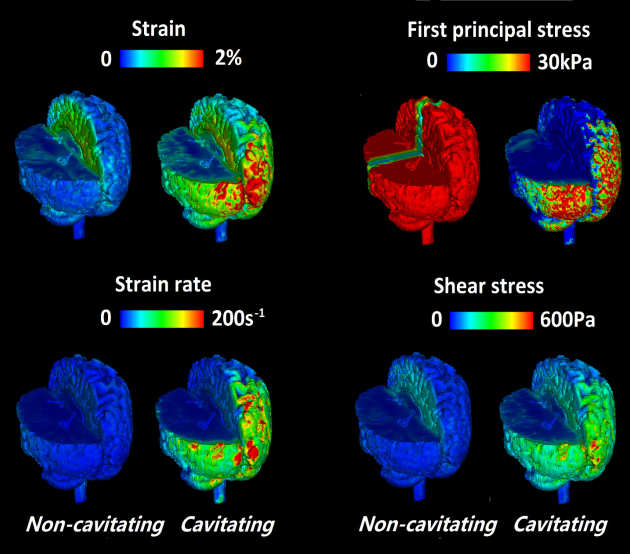Traumatic brain injury under blast loading
 Blast induced traumatic brain injury (bTBI) has been a prevalent injury in recent military conflicts. It is caused by blast waves transmission, debris impact, body acceleration and burns/toxic gas. Impact induced TBI (iTBI) has been extensively studied using animal and post-mortem human experiments and computational simulations. However, research on blast induced TBI is relatively limited. The bTBI mechanisms, particularly the role of primary blast wave, are still not fully understood. Previous work suggests that the injury mechanism of bTBI are different to iTBI. But most current combat helmets are designed to resist ballistic loadings, e.g. bullet and shrapnel striking, rather than resist blast wave loadings.
Blast induced traumatic brain injury (bTBI) has been a prevalent injury in recent military conflicts. It is caused by blast waves transmission, debris impact, body acceleration and burns/toxic gas. Impact induced TBI (iTBI) has been extensively studied using animal and post-mortem human experiments and computational simulations. However, research on blast induced TBI is relatively limited. The bTBI mechanisms, particularly the role of primary blast wave, are still not fully understood. Previous work suggests that the injury mechanism of bTBI are different to iTBI. But most current combat helmets are designed to resist ballistic loadings, e.g. bullet and shrapnel striking, rather than resist blast wave loadings.
In this study, we firstly explore the mechanism of blast induced traumatic brain injury. Secondly, based on the knowledge of bTBI mechanism, we aim to design novel helmet structures, capable of mitigating blast wave loading. Both numerical simulations and experiments are conducted within this study. Our goal is to mitigate the brain injury caused by blast wave loadings.
Sponsors



